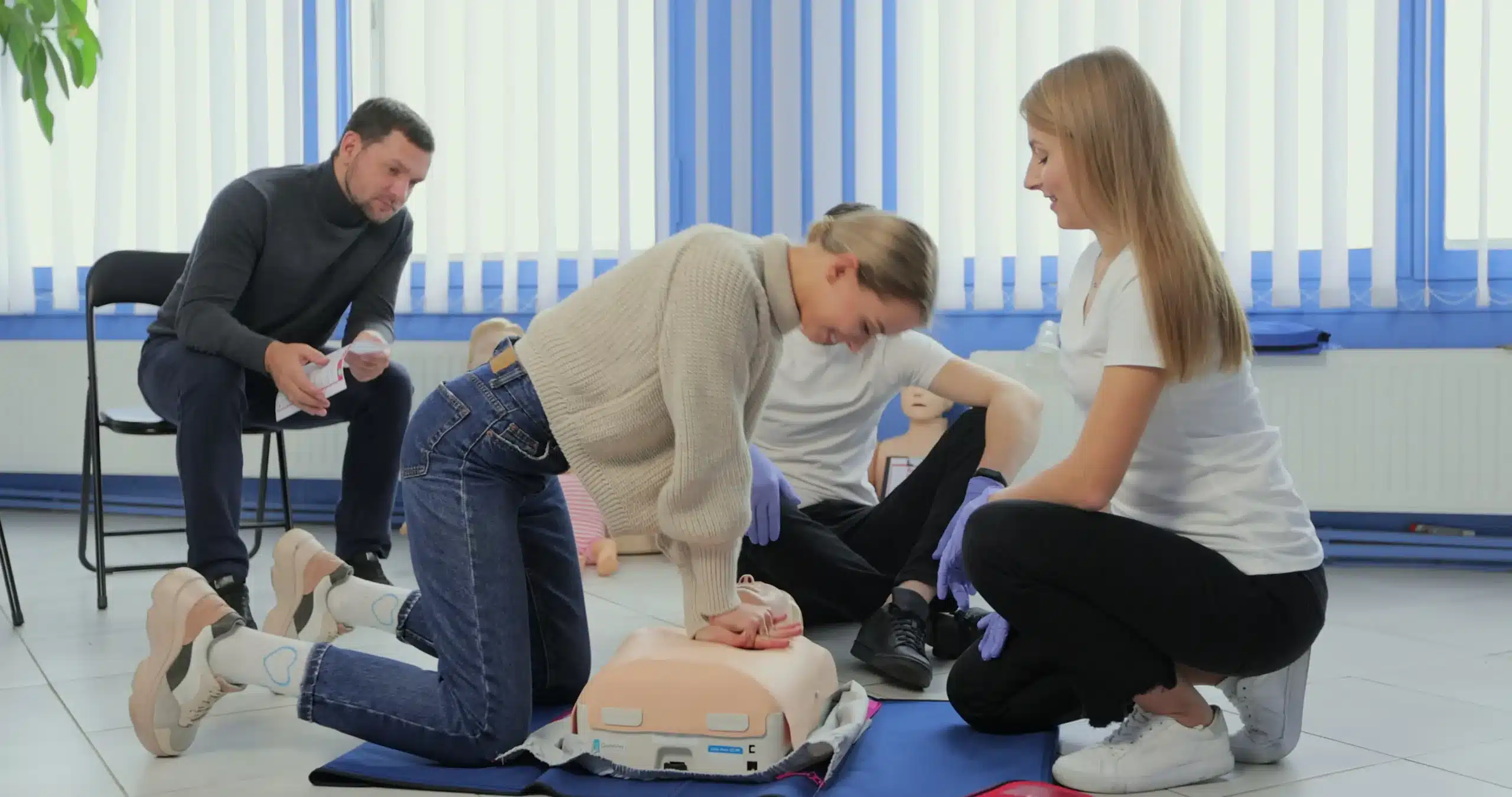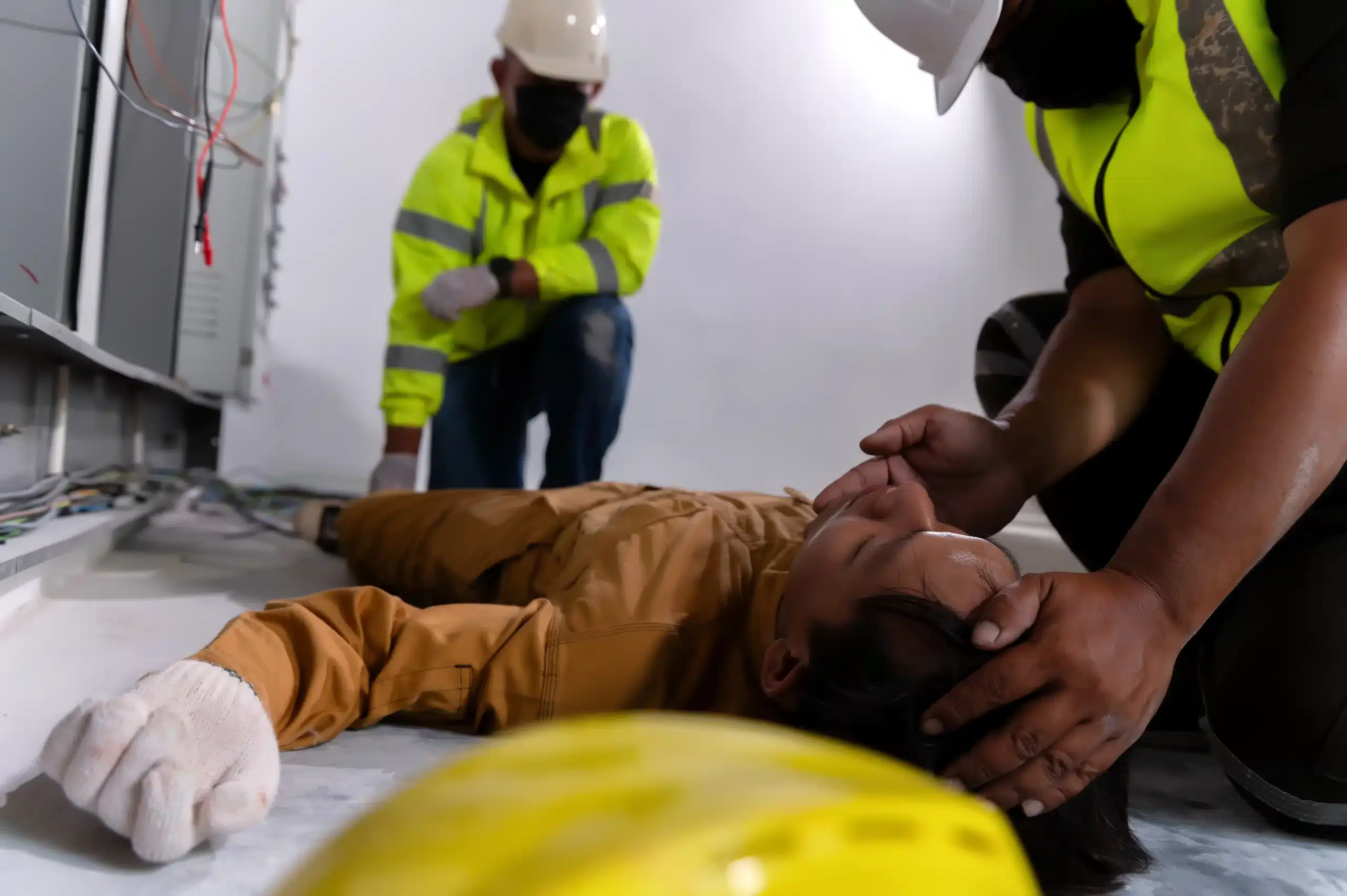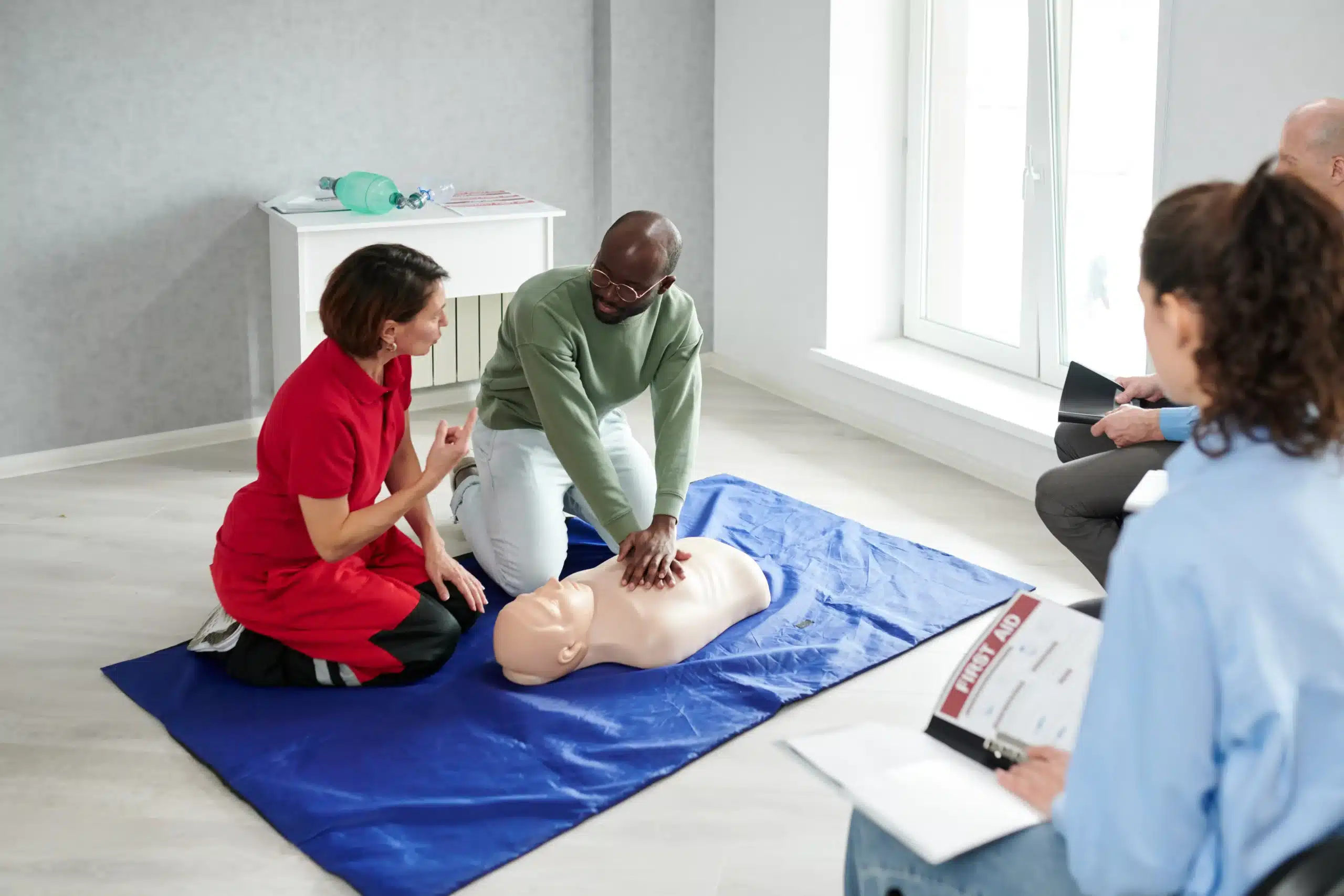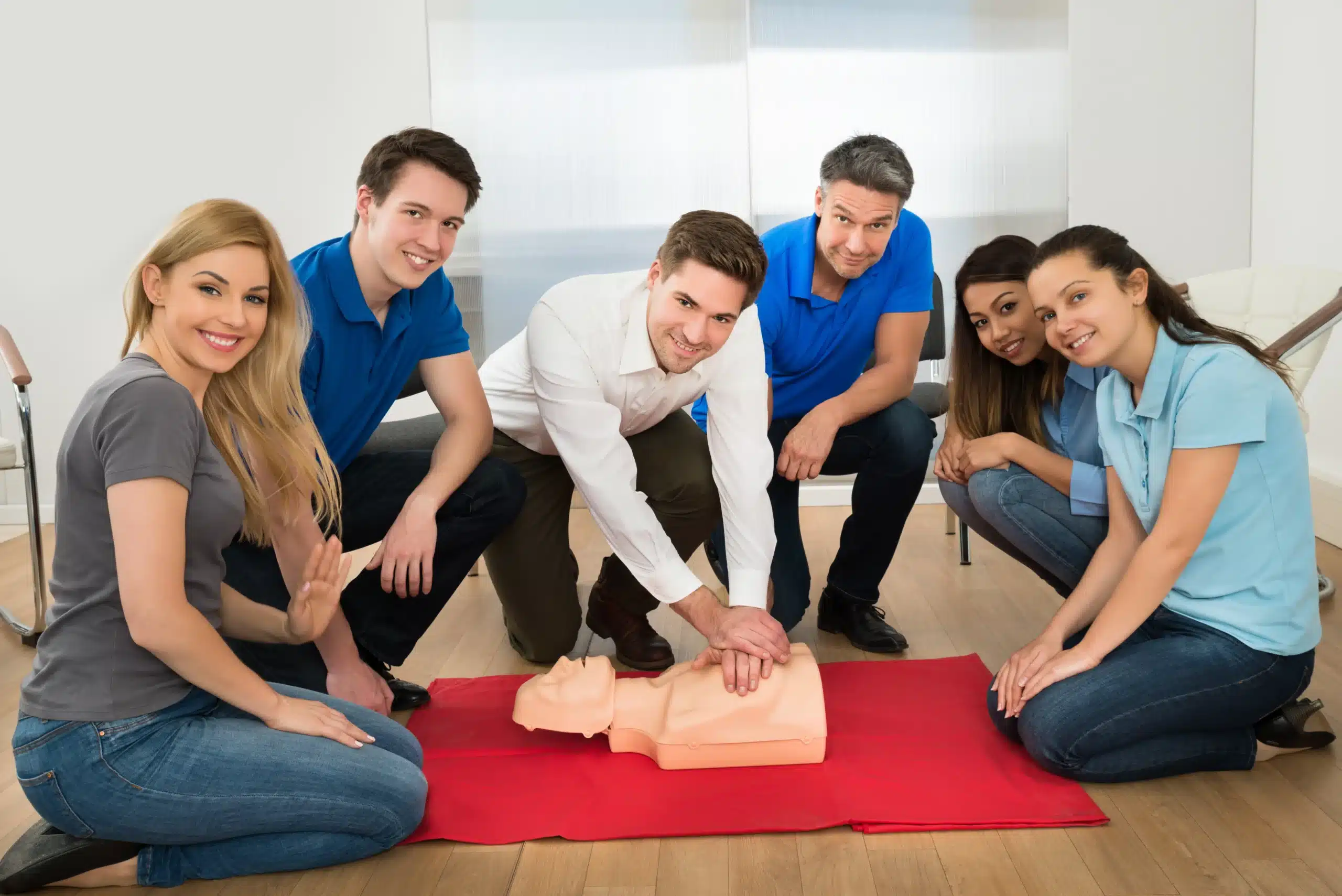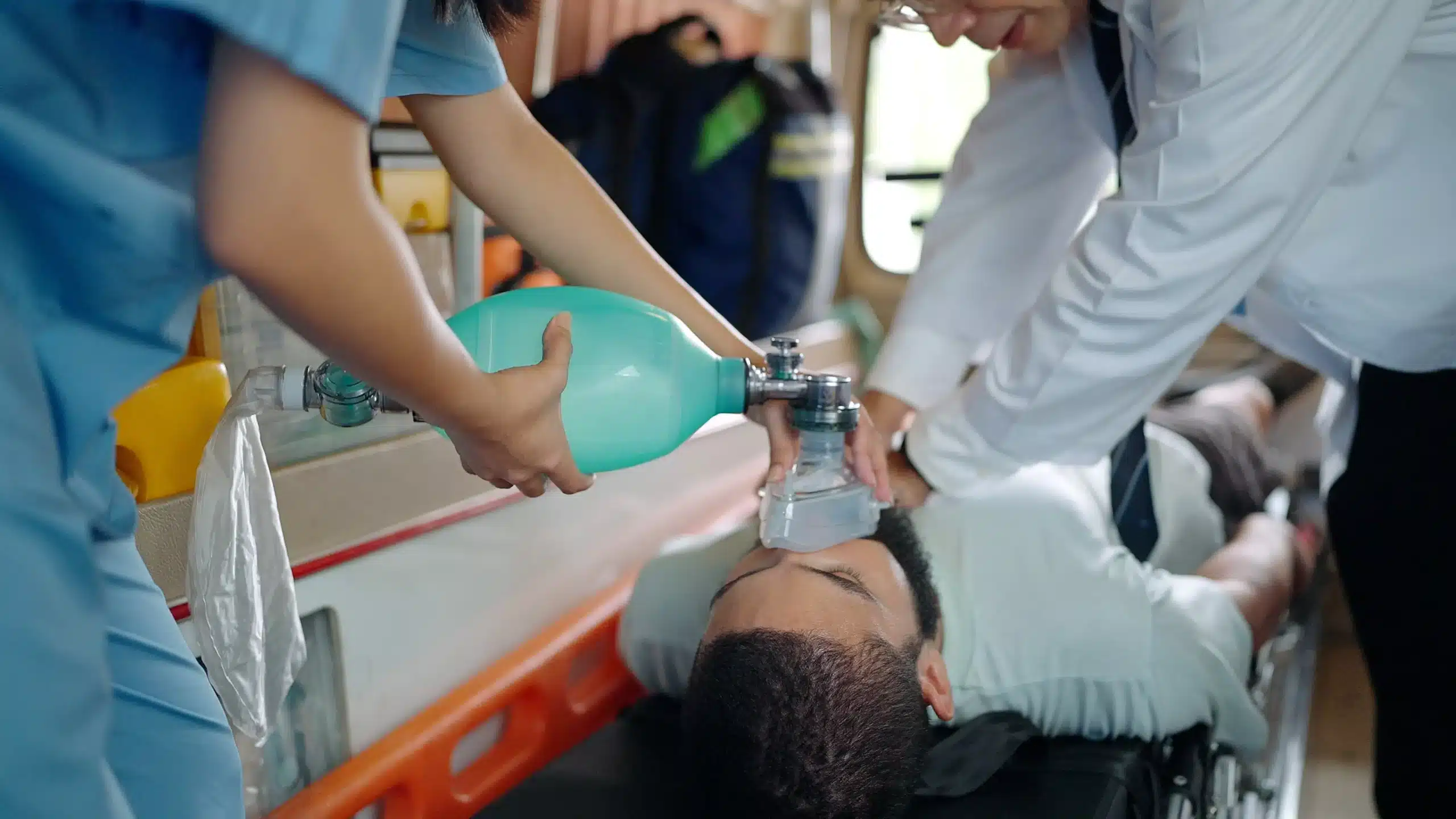Learning CPR is more than just acquiring a skill; it’s about becoming a vital part of your community’s safety net. CPR certification gives you the confidence to act quickly and effectively during medical emergencies, potentially saving a life. This article will walk you through the process of finding CPR courses near me, explaining the different certification levels, the costs involved, and what to expect during training. We’ll also discuss the importance of choosing an accredited training provider and how CPR knowledge strengthens the overall health and resilience of our communities.
Key Takeaways
- CPR skills can save lives: Learning CPR, whether basic or advanced, empowers you to help in emergencies and significantly improves survival odds. Explore options like BLS, ACLS, PALS, and NRP to find the right fit.
- Finding the right CPR course is easy: With various formats (online, in-person, blended) and numerous providers offering certifications, you can choose a course that matches your schedule and learning style. Look for discounts and financial aid options to make training more accessible.
- Select a CPR provider carefully: Prioritize experienced instructors, accredited organizations (AHA, Red Cross), and positive student reviews when choosing your training provider. This ensures a valuable learning experience and a widely recognized certification.
Why CPR Matters
CPR—or cardiopulmonary resuscitation—can save lives. It’s a combination of chest compressions and rescue breaths that keeps blood and oxygen flowing to the brain and other vital organs during cardiac arrest. Learning CPR empowers you to respond effectively in these critical situations, and can double or triple a person’s chance of survival. CPR buys precious time until professional medical help arrives. Consider getting CPR certified—it could make all the difference for someone in need.
CPR Misconceptions
It’s important to have a clear understanding of CPR. Unfortunately, misconceptions can discourage people from learning this life-saving skill. Let’s clear up a few common myths:
-
CPR Will Always Revive Someone: CPR isn’t a fail-safe; it significantly increases the odds of survival, but it doesn’t guarantee revival. Many factors influence CPR’s effectiveness, like how quickly it’s started and the underlying cause of the cardiac arrest. Learn more about these factors in this article on CPR misconceptions.
-
Only Medical Professionals Can Perform CPR: Anyone can—and should—learn CPR. Quick action by a bystander can dramatically impact a cardiac arrest victim’s outcome. This article further explores the importance of bystander CPR.
-
Fear of Causing Harm: Some worry about causing injuries, like broken ribs, during CPR. While this is a possibility, the potential to save a life far outweighs the risk. It’s always better to attempt CPR than to do nothing. Read more about common CPR myths to understand the bigger picture.
-
CPR Should Be Performed Until Help Arrives: Ideally, yes, but rescuers shouldn’t push themselves past exhaustion or remain in an unsafe environment. It’s okay to stop if you physically can’t continue. This article debunks this and other CPR myths.
Dispelling these myths encourages more people to become CPR certified and ready to act in emergencies.
CPR Course Options
Choosing the right CPR course depends on your background and goals. Here’s a breakdown of common CPR certifications:
BLS
Basic Life Support (BLS) CPR certification is for anyone who wants training from the American Heart Association. This course covers core life-saving skills, including CPR for adults, children, and infants, how to use an automated external defibrillator (AED), and relief of choking. BLS certification is essential for healthcare providers and a smart choice for anyone who wants to be prepared for an emergency.
ACLS
Advanced Cardiac Life Support (ACLS) certification is designed for healthcare professionals who respond to cardiovascular emergencies. This course builds on the foundation of BLS CPR and includes advanced interventions such as airway management, rhythm recognition, and pharmacology.
PALS
Pediatric Advanced Life Support (PALS) training focuses on the emergency treatment of infants and children. It’s crucial for healthcare providers who work with young children, including doctors, nurses, paramedics, and respiratory therapists, or anyone who may encounter pediatric emergencies.
NRP
The Neonatal Resuscitation Program (NRP) equips healthcare providers who care for newborns with the skills to manage newborn emergencies. This course covers essential steps for resuscitation, including airway management, chest compressions, and medication administration.
First Aid + CPR
Many providers offer combined First Aid and CPR training, teaching essential life-saving skills for various situations. These courses typically cover adult, child, and infant CPR, AED use, and basic first aid techniques for common injuries like cuts, burns, and fractures. These combined courses are suitable for a wide range of people, from parents and teachers to workplace safety officers.
Find CPR Courses Near You
Ready to get CPR certified? Finding the right course is easier than you think. Here are a few ways to locate training options:
Online Search
Start with a quick online search. Type “CPR certification near me” into your search engine to find local providers. You can also search for specific certifications, like “ACLS certification Oakland.” Many training centers have websites with schedules, course descriptions, and online registration, so you can easily compare options.
Healthcare Providers
Hospitals and clinics often offer CPR training for their staff and sometimes open these courses to the public. Check with local healthcare providers or browse their websites for information on upcoming sessions.
Community Centers & Fire Departments
Community centers and fire departments are great resources for affordable CPR and first aid training. They often hold regular classes for community members. Check their websites or contact them directly to learn about schedules and registration.
Trusted Organizations
Several respected organizations offer standardized CPR training programs and certifications. Here are a few reliable options:
American Heart Association (AHA)
The American Heart Association offers a wide range of CPR and first aid courses, including BLS, ACLS, PALS, and more. These courses meet industry standards and are widely recognized.
American Red Cross
The American Red Cross also provides comprehensive CPR and first aid training. They offer various course formats, including in-person and online options.
Safety Training Seminars
Safety Training Seminars offers a variety of CPR and first aid courses, including BLS, ACLS, and PALS, focusing on excellent customer service and affordable prices. They also offer group discounts and the fast certification RQI program. Check out their BLS, ACLS, and NRP course pages for more information. For larger groups, they have discount options available. They also offer a low price guarantee.
National Safety Council
The National Safety Council provides CPR training that meets OSHA requirements, making it a suitable choice for workplace safety training. Their courses emphasize practical skills for emergency response.
ProTrainings
ProTrainings offers online CPR courses for added flexibility and convenience. These self-paced courses allow you to learn on your own time and get certified from home.
What to Expect in Your CPR Course
Getting CPR certified is a rewarding experience. Knowing you can potentially save a life builds confidence and empowers you to act in emergencies. Here’s a glimpse of what awaits you during your CPR training:
Course Format & Duration
CPR courses accommodate various schedules and learning preferences. You can typically find classes in three formats: in-person, online, or blended learning (a mix of online coursework and an in-person skills session). In-person classes provide immediate feedback from instructors and allow for real-time practice with other students. Online courses offer flexibility, letting you learn at your own pace from anywhere with internet access. Blended learning combines the best of both worlds, offering the convenience of online learning with the hands-on practice of an in-person skills evaluation. Course duration varies depending on the certification level and the chosen format, but most basic CPR courses can be completed within a few hours.
Hands-on Practice & Skill Development
CPR training isn’t just about memorizing steps; it’s about developing the skills and confidence to perform CPR effectively in a real-life emergency. A significant portion of your CPR course will involve hands-on practice using training mannequins. These mannequins provide realistic feedback, allowing you to learn the correct hand placement, depth of compressions, and rhythm for effective CPR. You’ll also practice rescue breaths and learn how to recognize the signs of a heart attack or stroke. This practical experience is essential for building muscle memory and ensuring you can perform CPR confidently under pressure. Continued practice and staying current with the latest guidelines are crucial for maintaining your skills.
Exams & Certification
Most CPR courses conclude with a written exam and a practical skills test. The written exam assesses your understanding of CPR principles and procedures, while the practical test evaluates your ability to perform CPR correctly on a mannequin. Successfully completing both components earns you your CPR certification, which is typically valid for two years. Certification programs often include training in first aid and basic life support techniques. Earning your CPR certification not only demonstrates your commitment to safety but can also enhance your career prospects, especially in healthcare and education.
CPR Training Costs
CPR training is an investment in your skills and ability to help others, and thankfully there are options available for most budgets. Understanding the factors that influence cost can help you find a course that fits your financial needs.
Price Ranges
The cost of your CPR training depends on several factors, including the level of certification, the course format (in-person or online), your location, and the training provider. Basic CPR certification typically ranges from $50 to $150. More advanced certifications, such as ACLS (Advanced Cardiovascular Life Support) or PALS (Pediatric Advanced Life Support), or courses that include comprehensive first aid training, can cost $200 or more. Combined CPR and first aid certification courses often fall between $75 and $200, usually including certification fees. It’s always a good idea to contact a few different providers like Safety Training Seminars to compare pricing in your area.
Discounts & Promotions
Many training centers offer discounts for group bookings, making it a cost-effective option for workplaces, community groups, or families. Some providers also offer discounts for students, seniors, or members of specific organizations. Look for promotions or special offers, which can sometimes lower the overall cost. For example, Safety Training Seminars offers group discounts to make training more accessible. Be sure to inquire about any available discounts when you register. CPR Classes Oakland has a low price guarantee to ensure affordability.
Financial Assistance
While CPR training is valuable, the cost can sometimes be a barrier. If you’re facing financial constraints, explore potential financial assistance options. Some organizations or community centers may offer scholarships or reduced fees for eligible individuals. It’s also worth checking with your employer, as some companies cover the cost of CPR training for their employees, recognizing its importance in workplace safety. Understanding the different cost factors and exploring available discounts and assistance programs can help you find affordable, high-quality CPR training.
Certification & Renewal
Getting CPR certified is straightforward, and staying current with your skills is just as easy. Here’s what you need to know about initial certification and renewal requirements.
Initial Certification
You have several options for CPR certification courses, including in-person classes, online learning, and blended learning (a mix of online coursework and in-person skills practice). Organizations like the American Red Cross and the American Heart Association offer these courses, covering essential CPR techniques for adults, children, and infants. You’ll learn how to perform both hands-only CPR and CPR with rescue breaths. Expect to pay between $50 and $150 for basic CPR certification, with more advanced training potentially costing over $200. Safety Training Seminars offers a low price guarantee on CPR, BLS, ACLS, PALS, and NRP certification courses. We also offer group discounts, making it even more affordable to get certified.
Renewal Requirements
CPR certifications are typically valid for two years. To stay certified, you’ll need to take a renewal course before your current certification expires. These courses refresh your skills and knowledge, making sure you’re familiar with any updated guidelines or techniques. Many organizations offer convenient online renewal options, often providing a unique URL and QR code for easy access to your digital certification card. Safety Training Seminars offers the fast and convenient RQI program for recertification.
Choose the Right CPR Provider
Finding the right CPR provider is just as important as learning CPR itself. A great instructor can make all the difference in your confidence and learning experience. Here’s what to consider:
Instructor Qualifications
Look for CPR instructors with extensive experience and a passion for teaching. Expert, compassionate instructors create classes that are easy to understand and apply. A good instructor will answer your questions thoroughly and provide personalized feedback during practice. Check if your potential instructor has certifications beyond basic CPR—this can indicate a deeper understanding. Safety Training Seminars prides itself on experienced and enthusiastic instructors dedicated to providing high-quality training.
Accreditation
Ensure your CPR certification comes from a recognized and reputable organization. Online
Reviews & Testimonials
Before committing to a CPR course, check out reviews and testimonials from past students. These firsthand accounts offer valuable insights into the quality of instruction, course materials, and overall learning experience. Look for local CPR certification classes that fit your learning style and schedule. Providers offer various class schedules to accommodate busy lives. Positive reviews often highlight engaging instructors, well-structured courses, and a supportive learning environment. Our website features testimonials from previous students, so you can see what to expect.
Online vs. In-Person CPR: Which is Best?
Choosing between online and in-person CPR training depends on your learning style, schedule, and budget. Both options have their own advantages, and understanding these will help you make the right choice.
Advantages of Each
Online CPR courses offer flexibility. You learn at your own pace and fit the training around your schedule, which is especially helpful for busy professionals, parents, or students. Online courses are often more affordable than in-person classes, making them a budget-friendly option. It’s important to ensure your online CPR certification comes from a recognized organization like the American Heart Association (AHA) or the American Red Cross (ARC) to guarantee its validity. This way, you can be confident your certification meets established standards.
In-person CPR training provides a valuable hands-on learning experience. You’ll work with a certified instructor and practice on CPR training mannequins, developing the muscle memory and confidence to perform compressions effectively. This hands-on practice builds the skills you need to respond effectively in real-life emergencies. Direct interaction with an instructor allows for immediate feedback and personalized guidance, addressing your specific questions and refining your technique.
Blended Learning
Blended learning CPR courses offer a balance of flexibility and hands-on practice. These courses combine online learning modules with in-person skills sessions. You complete the theoretical coursework online at your own pace and then attend a practical session to practice your skills with an instructor. This blended approach combines the convenience of online learning with the benefits of hands-on training. It’s an excellent option for those who want a thorough understanding of CPR principles and the confidence that comes with practical application. You’ll gain both the knowledge and the skills to respond effectively in emergency situations.
Prepare for Your CPR Course
Getting ready for your CPR class is simple. A little prep work goes a long way toward a smooth and successful learning experience. Here’s what you need to know:
Registration
First, find a CPR certification provider that works for you. Compare course content, schedules, costs, and reviews. CPR Classes Oakland offers a low price guarantee and courses in over 60 cities, making it easy to find a class that fits your needs. Look for local CPR certification classes that suit your learning style and schedule. We offer everything from BLS for healthcare providers to CPR and First Aid training for everyone else. Check out our website for upcoming courses and register online. We also offer discounts for group classes.
What to Bring
Most basic CPR courses don’t require prior knowledge, but some advanced classes, like ACLS or PALS, might require a current CPR certification. It’s always a good idea to double-check with your chosen provider. Bring a notebook and pen to jot down notes, and dress comfortably. You’ll be practicing skills on the floor with mannequins, so comfortable clothing is key.
Pre-course Study
While pre-course studying isn’t usually mandatory for basic CPR, familiarizing yourself with the core concepts can boost your confidence. Brushing up on the basics beforehand will help you get the most out of the hands-on practice during the course. Improving CPR training is a continuous process. You can start by reviewing the latest guidelines from the American Heart Association or the American Red Cross. Understanding how feedback improves CPR performance is crucial for effective training and better patient outcomes. Even a little preparation can make a big difference in your learning experience.
CPR Training & Community Safety
CPR training is about more than just personal preparedness; it’s a vital thread in the fabric of community safety. When more people know CPR, it creates a network of potential lifesavers ready to respond to emergencies. Think about it: cardiac arrest can happen anywhere, anytime. Having trained individuals nearby can dramatically increase the chances of survival. CPR skills empower you to make a real difference in critical situations, potentially saving a life before professional help arrives. The Red Cross emphasizes the importance of regular refresher training to maintain proficiency due to the prevalence of cardiac arrest.
Equipping yourself with these skills contributes to a safer environment for everyone. From schools and workplaces to public spaces, a community trained in CPR is better prepared for unexpected emergencies. CPR Certification Now highlights how CPR training equips individuals with the skills to respond effectively, strengthening the overall health and resilience of our communities. Consider getting certified—it’s an investment in yourself and your community’s well-being.
Related Articles
- Why CPR is Crucial in Healthcare
- CPR Myths Exposed: Truth Behind Common Misconceptions
- Find CPR Classes Near Me: A Complete Guide – Oakland CPR Classes
- Preschool CPR Training: Your Complete Guide – Oakland CPR Classes
- ACLS Renewal Near Me: Your Complete Guide – Oakland CPR Classes
Frequently Asked Questions
How quickly do I need to start CPR after someone collapses?
Begin CPR as soon as possible. Every second counts. Immediate CPR can significantly improve the chances of survival.
What if I’m afraid of making a mistake while performing CPR?
It’s natural to feel hesitant, but remember that doing something is always better than doing nothing. The risk of causing minor injury is far outweighed by the potential to save a life. Focus on what you’ve learned in your training and trust your skills.
Are online CPR certifications valid?
Yes, but only if they include a hands-on skills assessment portion and are issued by a recognized organization like the American Heart Association or the American Red Cross. Make sure to choose a reputable provider.
How much does CPR training cost?
Costs vary depending on the type of certification, course format, and your location. Basic CPR classes typically range from $50 to $150. More advanced certifications like ACLS or PALS can cost more. Check with different providers and ask about discounts.
How often do I need to renew my CPR certification?
Most CPR certifications are valid for two years. Renewal courses ensure your skills and knowledge are up-to-date. Many providers offer convenient online renewal options.



